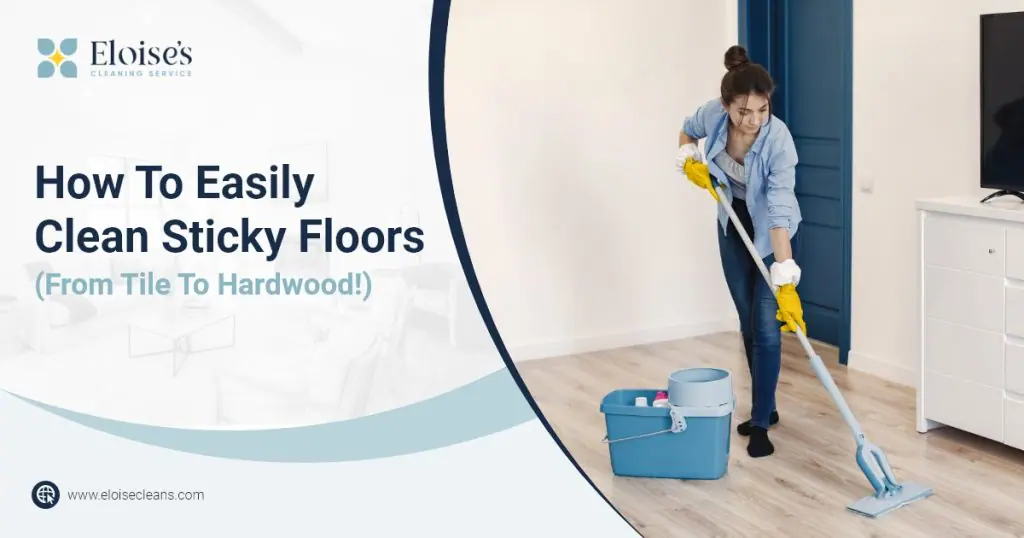Discovering sticky floors after a meticulous mopping session can be incredibly disheartening. But fret not! Hope is not lost. Reliable House Cleaners have your back with a simple and effective solution. Bid farewell to the frustration as we unveil the secrets to effortlessly cleaning sticky floors, regardless of whether they’re made of tile or hardwood.
Get ready to restore your floors to a spotless state with ease. Let’s dive in and conquer the stickiness together!
But what causes sticky floors after mopping?
If you think a sticky floor is a huge problem, it can be fixed and prevented. These are the most common causes that might be leaving your floors sticky:
- Dirty water/mop. When you’re mopping, the dirt doesn’t just disappear. It starts accumulating on the mop and water you’re using, and at a certain point, you’ll be coating the floor with muddy liquid instead of cleaning it.
- Too much cleaning solution. Using more cleaner than what the label indicates means it won’t be dissolved in water properly. This saturated mix will form a sticky layer once your floor has dried.
- Not rinsing your floor. Although it is not always necessary, not rinsing your floor means any dirt lingering after mopping will stay on the floor, which could make it sticky.
How to clean sticky ceramic, vinyl, and stone floors
Whether you have vinyl, natural stone, or ceramic floors, you’ll be glad to know that the solution to your sticky problems is almost as simple as their causes. However, you still have to follow some indications if you don’t want to end up with a dirty floor again.
Disclaimer: Some practices in this method aren’t safe for hardwood. Jump to the next section for a few recommendations.
Step #1. Clean your tools
You can’t fight dirt with more dirt, so rinse and wring your mop under running water until no more grime comes out of it. If your mop bucket is also filthy, rinse it with clean water as many times as necessary.
Step #2. Make a cleaning (or rinsing) solution
As you’re going to rinse your floors, you’ll only need to fill your mop bucket with warm water. If you’ve noticed dirty streaks or smudges, don’t add floor cleaner; instead, add ½ tablespoon of dish soap for some cleaning power.
Step #3. Mop and rinse
Once you have everything ready, mop your floors as usual, but make sure to rinse your mop every now and then this time. The key here is keeping everything clean, so also change the water as soon as you see it getting dirty. Finally, let your floors air dry.
What about hardwood floors?
Although you can essentially carry out the same method as before to clean your hardwood floors, you need to consider a few important things to avoid damage. Check them out:
- Don’t use hot water. Hot water makes wood expand (and warp if there’s not enough room), so fill your mop bucket with cold water to avoid damage.
- Enhance the cleaning power. As cold water is at a disadvantage compared to warm water, compensate by adding one tablespoon of mild dish soap.
- Wring your mop well. Be sure to wring your mop until it’s just slightly wet. Too much water could make the wood swell and deform.
Let us help you avoid sticky situations!
Eloise’s Cleaning Service is fully prepared to tackle your cleaning needs—including mopping your floors! Once you hire the best cleaning service in Wilmington, you won’t have to deal with sticky floors again. Don’t hesitate and book with us today!

